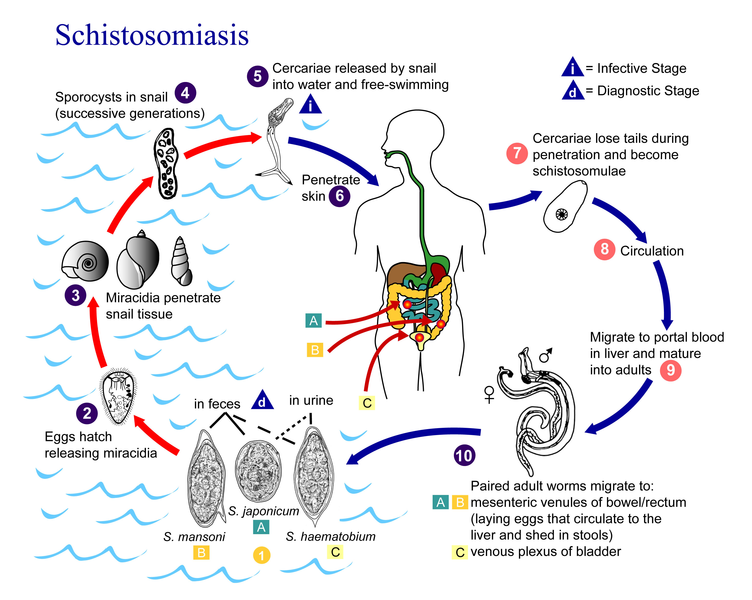Fichier:Schistosomiasis Life Cycle.png

Taille de cet aperçu : 752 × 600 pixels. Autres résolutions : 301 × 240 pixels | 602 × 480 pixels | 963 × 768 pixels | 1 280 × 1 021 pixels | 2 560 × 2 042 pixels | 2 936 × 2 342 pixels.
Fichier d’origine (2 936 × 2 342 pixels, taille du fichier : 1,94 Mio, type MIME : image/png)
Historique du fichier
Cliquer sur une date et heure pour voir le fichier tel qu'il était à ce moment-là.
| Date et heure | Vignette | Dimensions | Utilisateur | Commentaire | |
|---|---|---|---|---|---|
| actuel | 21 septembre 2010 à 17:05 |  | 2 936 × 2 342 (1,94 Mio) | wikimediacommons>Leyo | {{Information |Description={{en|Eggs are eliminated with feces or urine (1). Under optimal conditions the eggs hatch and release miracidia (2), which swim and penetrate specific snail intermediate hosts (3). The stages in the snail include 2 generations o |
Utilisation du fichier
Aucune page n’utilise ce fichier.


